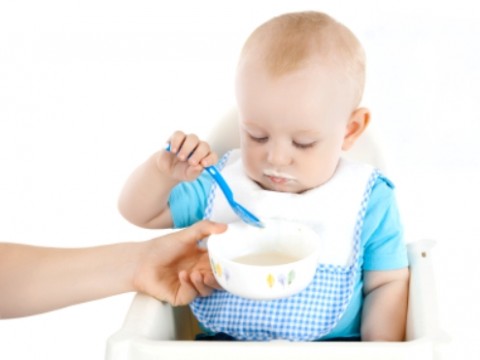Food allergies can fill parents with anxiety. According to the Centers for Disease Control, 4 to 6 percent of children under the age of 18 have food allergies, and that number has been increasing over the last 10 years. Researchers do not know why food allergies are on the rise, and the best way you can protect your baby is to recognize the symptoms and know when to seek treatment.

While babies can develop allergies to any food, 90 percent of all food allergies are caused by these foods: eggs, peanuts, cow’s milk, soy, tree nuts, fish and shellfish. The good news is most babies outgrow food allergies by the time they are ready for school. Very few retain severe allergies to peanuts, shellfish or other common culprits.
Symptoms
When a baby has an allergic reaction to food, his body will treat the food like an infection, and the immune system will attack it by releasing histamine to fight off the offending food. Symptoms can include hives, trouble breathing, vomiting, diarrhea and eczema. Hives and respiratory distress occur within minutes of eating the potential allergen.
Severe allergies can cause respiratory distress immediately. If your baby has trouble breathing after consuming a new food, call the paramedics immediately; don’t waste time calling your doctor or driving to the hospital. If your baby shows mild symptoms after eating certain foods, notify your doctor””he or she might recommend allergy testing.
Prevention
Babies can have a reaction to a food even if they’ve already been exposed to it. This is why a slow and careful introduction of new and whole foods is important. The first foods your baby should eat are rice cereals that can be diluted. Rice seldom causes allergic reactions, so it is a good first food. Feed the rice cereal for at least four days before introducing another food.